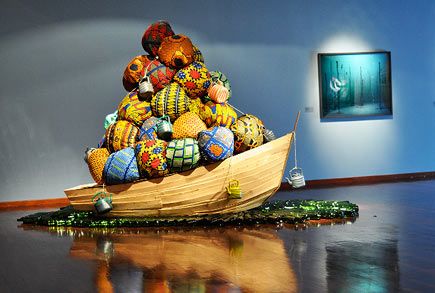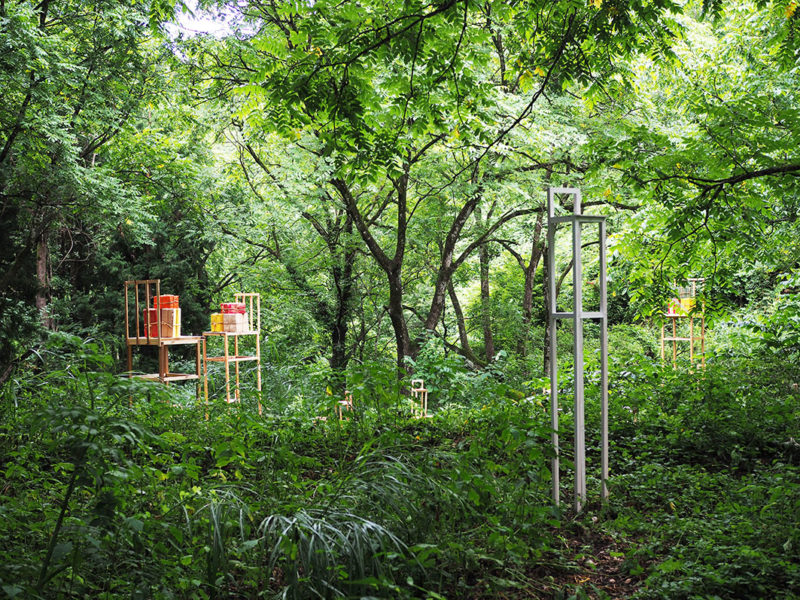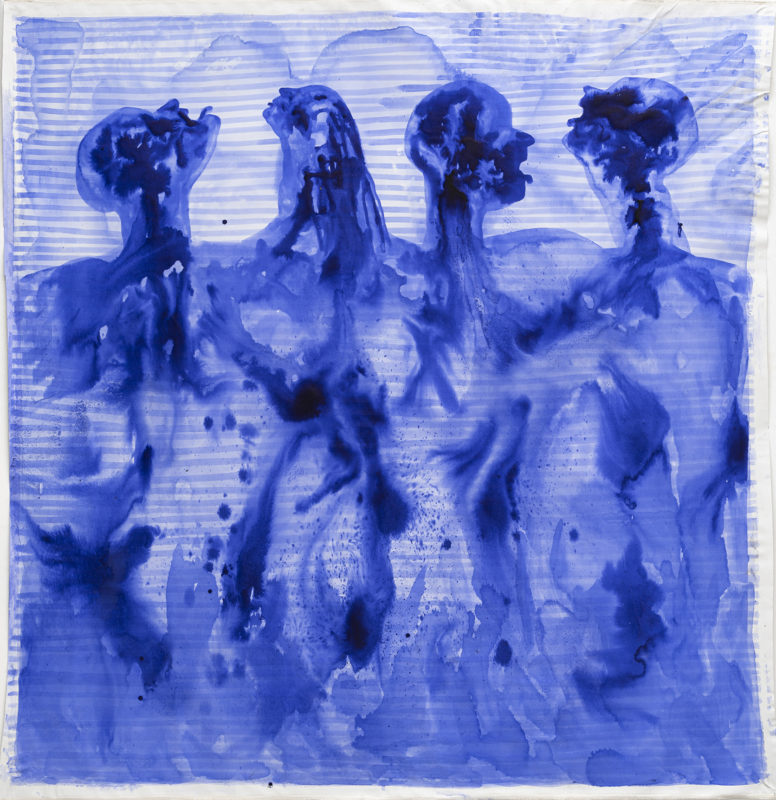Barthélémy Toguo, was born in 1967 in Cameroon. Moved to Europe in 1993. In 90’s the artist was interested also in performance, and gradually worked also on watercolor. He now works as a installation artist and a painter, working both in Paris and Cameroon.
主な展覧会 Selected exhibitions
- 2019 Aichi Triennale, Nagoya, Japan
- 2018 Echigo-Tsumari Art Triennale, Toakachi, Japan
- 2018 Kochi-Muziris Biennale 2018, Mumbai, India
- 2016 Prix Marcel Duchamp 2016, Centre Pompidou, Paris, France
- 2015 Biennale di Venezia - 56th International Art Exhibition, Venice, Italy
- 2011 11e Biennale de Lyon, Lyon, France
- 2010 17th Biennale of Sydney - The Beauty and the Distance, Sydney Australia
- 2004 solo exhibition, Barthélémy Toguo: Sick Opera, Palais de Tokyo, Paris, France
作家自身の言葉 Statement by the Artist
COVID19 has triggered synchronized containment around the world.
I went through a phase of bewilderment, since my projects scheduled for the second semester were postponed. It resulted in fruitless bubbling to generate creative force. Everything was slowing down. I was in Cameroon for more than three months with very limited means to meet my production, the demands. My confinement outside my studio has increased my concerns, lengthened the interaction times with all my interlocutors abroad and my reading of the world. Agriculture and work in the fields at Bandjoun Station, my commitment to the inhabitants allowed me to invest my energy in people and the health crisis.
2020 Barthélémy Toguo
about Bandjoun Station by the artist
作品について Works by the Artist
In Venice Biennale 2015, Chihiro Shiota’s installation with red strings and boats filling the whole venue presented at Japanese Pavilion was impressive. Along this work, “Urban Requiem” by Barthélémy Toguo was one of the most impressive work in the biennale. The strong presence of the work in the space and its meaning we imagine from the piece was overwhelming. Number of large handmade heavy looking stamps were placed on the shelves. (In a glace, I understood that the work was by African artist, perhaps from my experience seeing numbers of works, but I still do not know why). On each stamps, different message such as “resistance, End Police Brutality”, or “Hope”, and they are being stamped on the wall. We notice that the shape of the stamps are bust of anonymous figures, and to make audience realize this, some are placed on the top of the shelves like wooden bust sculptures. The works tells us about the reality of the global situation, not only in Africa, with conflicts, discrimination and paradox and violence. Message from African artist might strangely have more impact than us or Westerners. In 2007, Toguo was invited to participate in Venice, but declined participation due to his political consideration. The artist must have intentionally presented this work for 2015 to show the visitors from around the world.

Barthélémy Toguo, was born in 1967 in Cameroon. Studied art in Côte d'Ivoire and moved to Europe in 1993. In 90’s the artist was interested also in performance, and gradually worked also on watercolor. As the artist already had an experience studying wood carving, he now works as a installation artist and a painter, working both in Paris and Cameroon. As a immigrant himself, as well as the history of West Africa in 16th to 18th Century for Europe, it may have been natural for the artist to be interested in immigration, borders, or global movement of people and its history, making it a theme to produce the work. Vehicles, especially boats frequently are taken up as a material for the installation. But his work does not aggressively claims the history negatively, but seems to be more interested in the present and future condition of Africa.

In his work, “Road to Exile”, Toguo uses life size boat with large colorful bags loaded extremely high making the boat unstable. Empty glass bottles cover the floor implies the difficulty of its journey. But it may not be merely be a sorrowful trip, as the artist’s journey was, and the color of bags may also imply, the freight may be bagful drams or hope of Young African immigrants.

Obviously, the artist gentle personality may naturally be reflected to the work sometimes, as I have also experienced when I was working with this artist to create an installation entailed “Welcome” for Echigo-Tsumari Art Triennale in 2018. Hearing that the site to install the work was an old passage where travelers walk along the stream in the mountains off the beaten track, the artist decided to install number of seating for those travelers in the past. On some seats, traveler’s luggage was placed as a part of the installation. The artist was not only talking about the hardship of the travel in those days, but more concerned about their safe travel. By also hearing that empty bushes where we installed the work used to be rice field, the artist seemed to be impressed saying how far they had to walk to cultivate the land and with a big sigh, felt a big loss seeing no one around.


Based on his own experience, but not only about the people from Africa, the artist is interested in the movement of people from one place to another and its history, traveling, crossing boundaries, transportation and communication. He is also interested in the tools related to those movements such as passports and stamps policing the movement, or postcards. He has worked on projects creating original postcards asking participants residents to write about their identity to be posted to the artist. In Venice, the artist selected stamps as a material which has a function to regulate and approve people’s activity.

As the work presented to Venice, the artist also created series of works criticizing human rights in Africa or discrimination in Europe and Africa. The artist has one created series of work entitled “Stupid African President” using photograph of his own, and largely acclaimed watercolor drawings which gives a strong impression. From these drawings with anonymous figures with twisted and distorted bodies, we are able to even hear the mourn of people from the depth of the back pages of the history, suppression, poverty, and violence, veiled by our history based on development.












